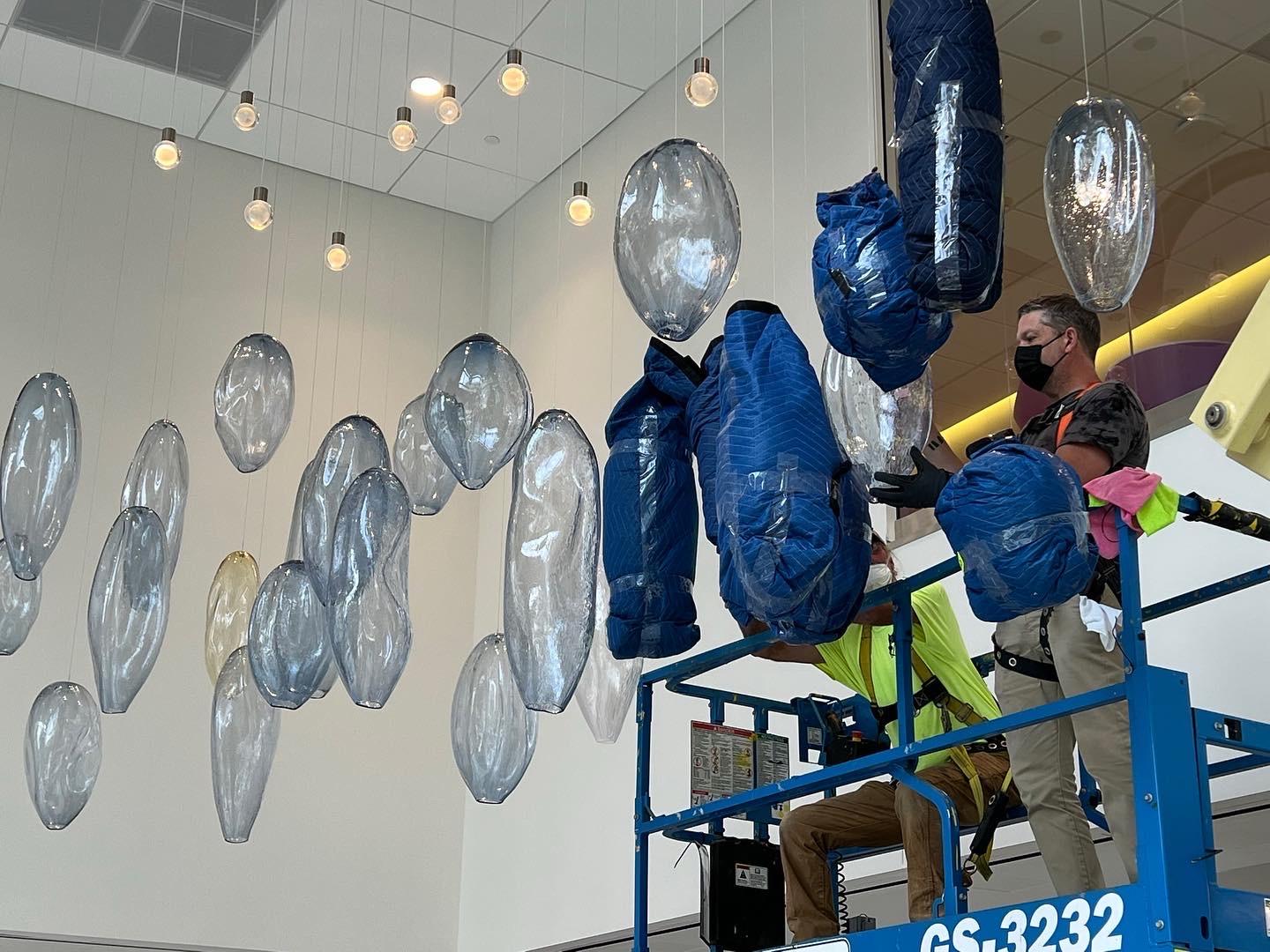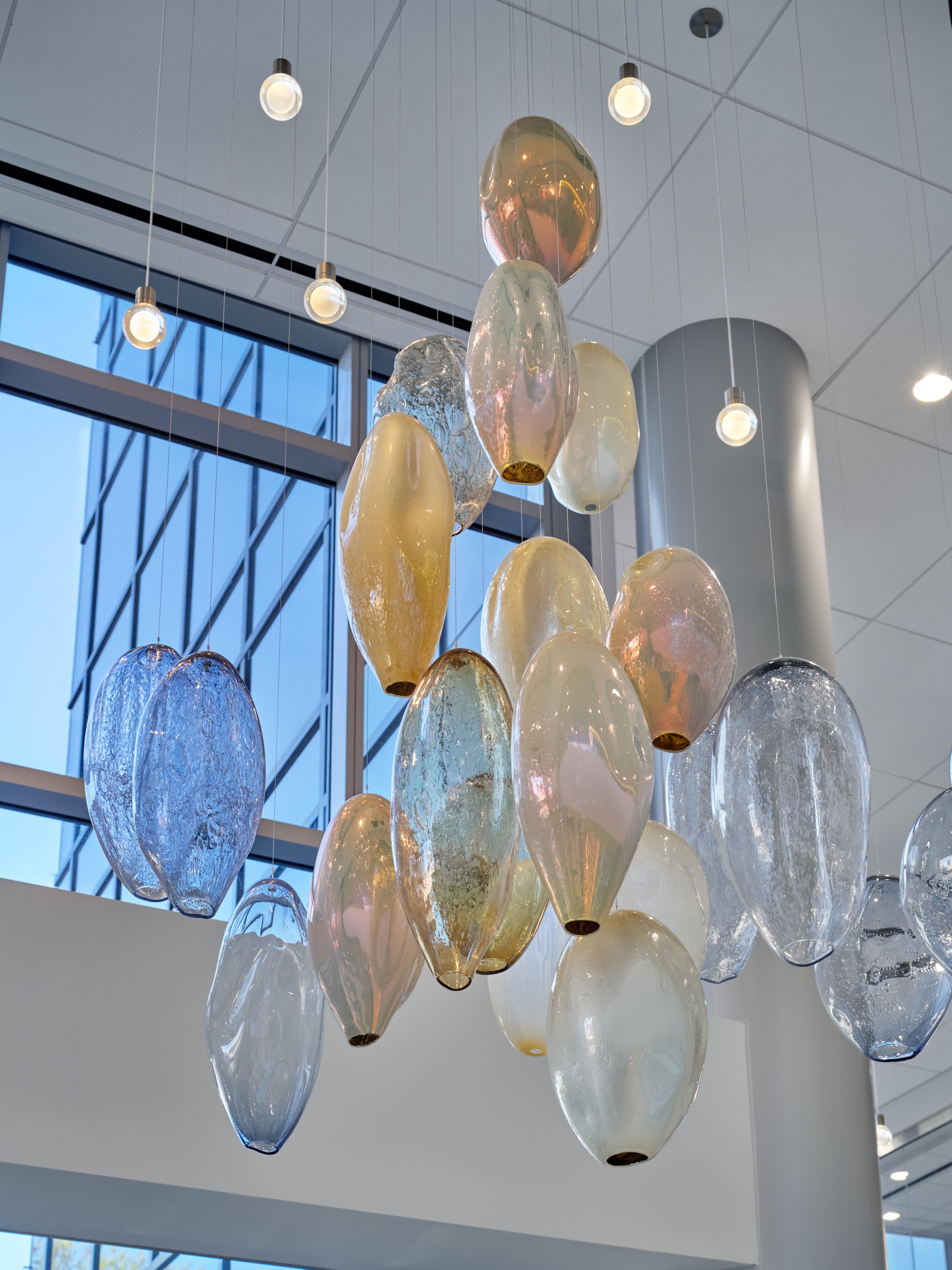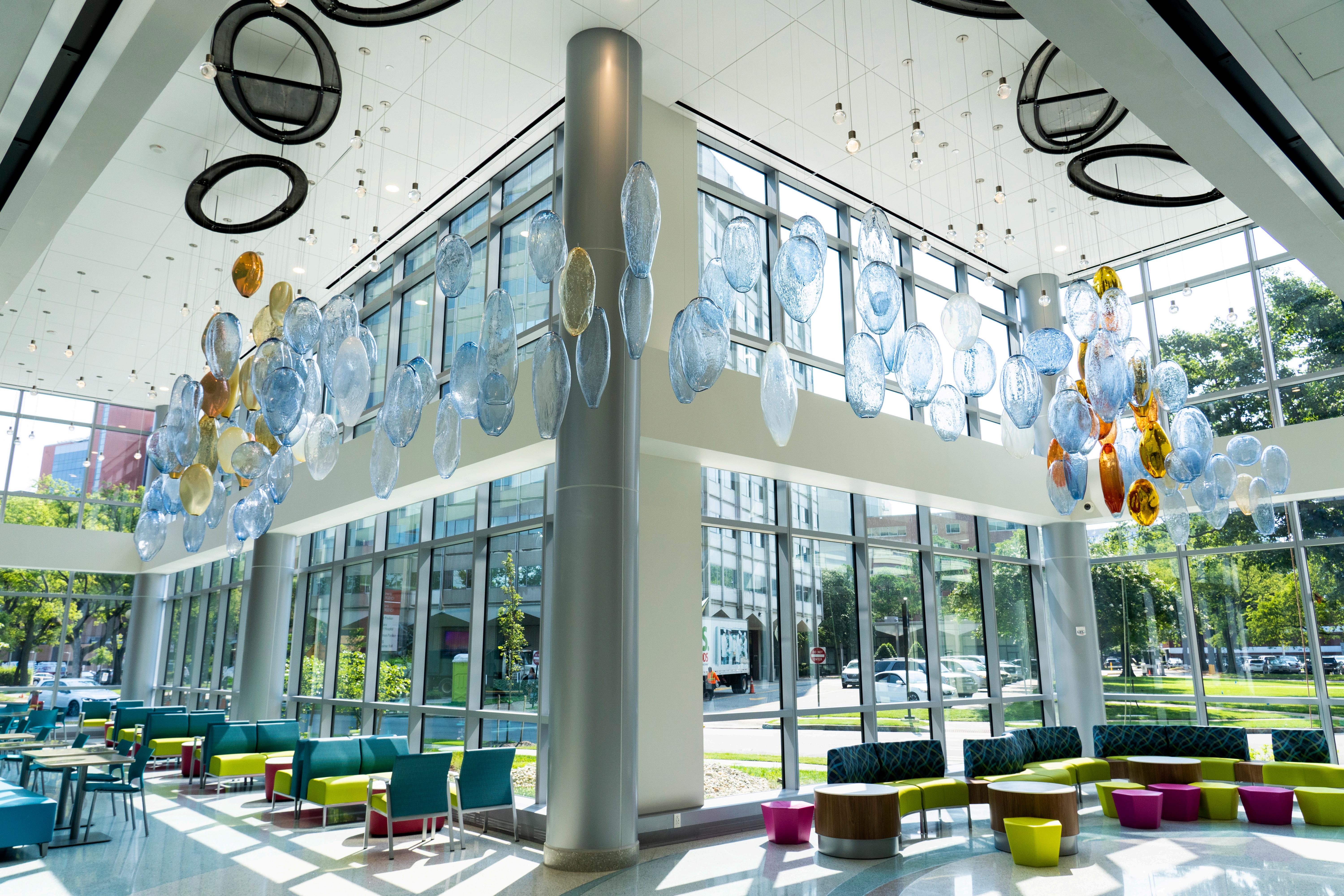

Ann Gardner, Heather Gaudio, Yoshi Sugo, Robert Schwarz

In 2018 , the Children’s Hospital of the King’s Daughters (CHKD) in Norfolk, Virginia established the “Lighting the Way” campaign to build a brand new, state -of-the -art Children’s Pavilion . The purpose was to address the pressing regional need for pediatric mental health services. Designed by Patricia Malick , Principal of Array Architects, the colorful, sun -drenched facility was completed in 2022 . Reflecting CHKD’s holistic approach to healthcare, artworks were specifically commissioned from artists all over the world to be housed throughout the 14 -story building .
Decades of research has proven that art enhances and humanizes hospital environments for patients, their families, and staff. Mental health treatments in particular benefit from the emotive connection and reflection viewers make when encountering beauty, joy, and creativity. The works selected for CHKD were carefully curated with the intention to bring inspiration, comfort, and healing to those entering the building .
In the summer of 2021 , CHKD engaged Heather Gaudio Fine Art, in partnership with Forum Gallery, to present the Hospital Board with choice art works that would reflect its healthcare mission . Renowned Seattle -based artist Ann Gardner was awarded the commission to create a large site -specific work for the hospital. Gardner is known for working in hand -cut colored glass mosaic as well as blown glass. As one one the most ancient man -made materials, glass has been Gardner’s primary medium, its properties allowing the artist to delve deep into investigations of color, pattern, and volume, among other characteristics.
At that time, construction of the hospital building was well underway and on course to be completed the following summer. The fast-track timeline became a determining factor in Gardner’s choice of blown glass for the proposed installation . Every artist’s nirvana is to be presented with a creative blank slate devoid of constraints, and that is pretty much what Gardner received . The only parameter to designing and executing the work was time, as the project did not have the benefit of long -term planning . Gardner set forth to thinking about the possibilities afforded by the various spaces in the building, which at the time existed only as two-dimensional architectural renderings. Fortuitously, her decades-long career included working with large -scale site -specific installations, the experiences of which gave her a keen appreciation of the importance of scale . Through the use of maquettes and CAD/CAM drawings, Gardner was able to visualize the scale of the space and discern the appropriate size of an artwork that would transform its environment.
Understanding the physical space, who uses it and for what purpose have always informed Gardner’s decisions on design and visual outcome. The artist intuits that artworks should be in harmony with the environments they occupy. As she studied the architectural plans and through her various conversations with Malick , Gardner perceived that light and airiness were an integral part of the building’s design. The tall ceilings and windows were in keeping with Gardner’s sensibility where light, transparency and reflection also formed a part of her life -long artistic explorations. Light, vital to people and artworks, is curiously often overlooked because as an element it is invisible to the naked eye. When it comes to glass, light becomes fundamental in highlighting the key elements that are important to glassworks. The physicality of glass combined with the ephemerality of light creates a dance between the two. For Gardner, the sun-drenched entry-level twostory atrium on the ground floor with its high ceilings, a long passageway leading toward a central point in the hospital, the cafeteria, became the ideal space for the installation. In this area of high visibility, the artist used glass for this project in a very precise way that also reflected CHKD’s mission and vision.

The proposed and accepted design culminated in a monumental-scale sculpture that consists of over 140 hand -blown unique glass orbs, each strung via a thin cable that connects to seven oval steel rings. As compared to Gardner’s mosaic work, the hand -blown glass orbs offer a less structured format which aesthetically allows for the work to flow and float through the space. Suspended from the ceiling, the rings are arranged in a loosely linear configuration to run along the length of the corridor below. Each ring holds a cluster of elongated and round globes hanging at differing heights so viewers on the second floor can also interact with them at eye level. At one end of the corridor, the atrium entrance, the orbs cluster into a grouping colored with deep fiery reds, orange, and gold, evocative of a sun. As the spheres make their way to the other end of the hallway, they gradually “cool” and become more transparent. At the other end of the atrium, the soft blues culminate in another cluster of muted yellows and frosted grays, an arrangement representing the moon. In situ, the nature of the glass directs the viewer’s attention to transparency and the light beyond its physical edges. Clarity becomes more nuanced when the orbs overlap with other arranged clusters.
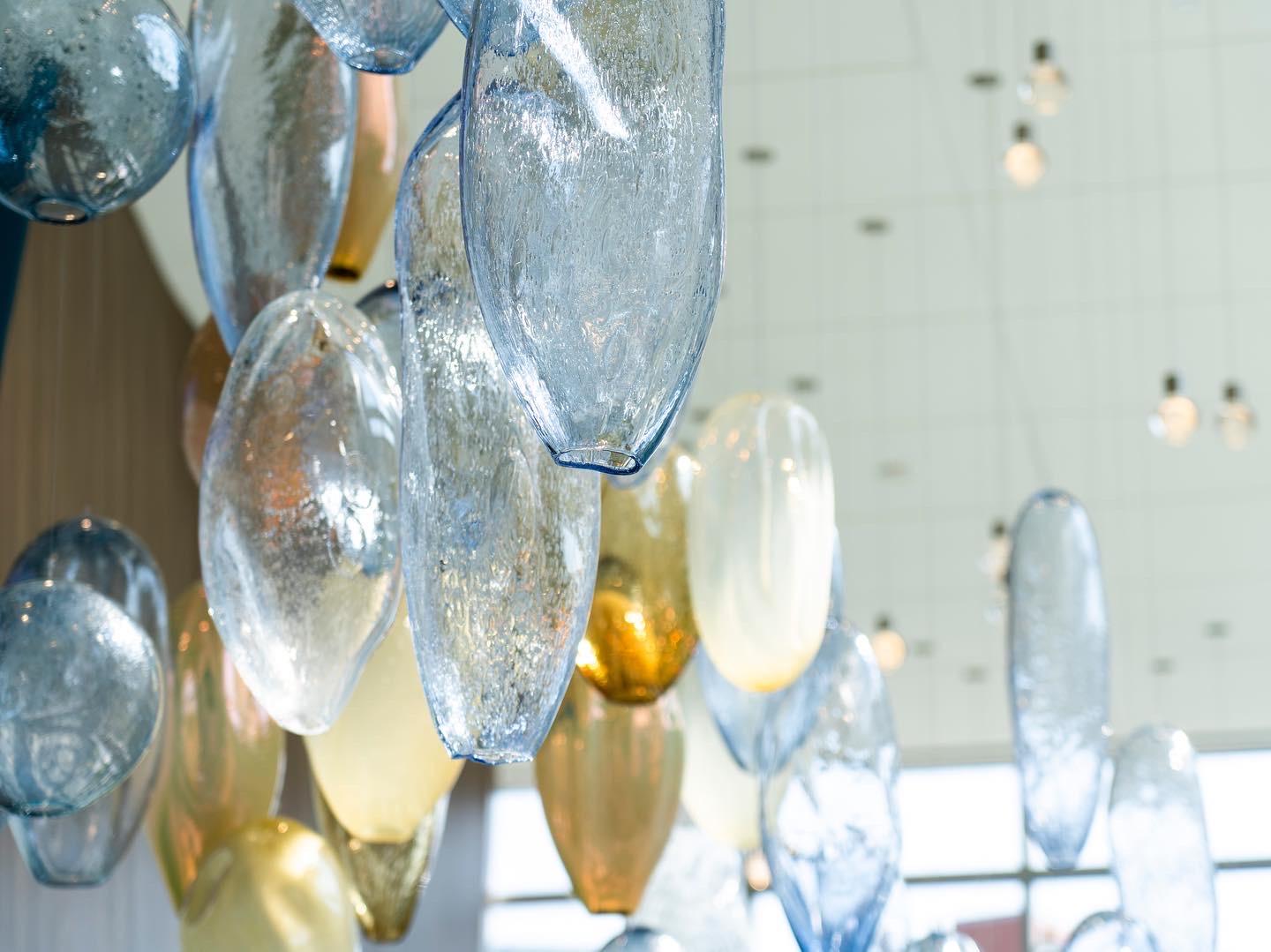
New Day, the title of the installation, is a visual representation of time. The celestial bodies of the sun and the moon depicted at either end of the atrium, and the elements in between suggest the passage of time, the beginning, and the end of a day. The quote “remember the promise of the morning” is a direct inspiration for this site-specific installation. Gardner thought pointedly about the audience who would encounter the sculpture, proposing the notion that another day will follow, bringing hope for another tomorrow. In the early phases of design, the artist thought the installation would require a large number of small rings to support the weight of the glass. In the end, seven oval rings in a larger scale fit proportionately over the hallway. Although not deliberately intended as such, the passage of time can also be inferred by these seven steel rings, one for each day of the week. “This association happened serendipitously,” the artist states. The spatial and temporal complexity of the installation is further defined by the fact that it cannot be seen at once in its entirely. Viewers must traverse the hallway and see it unfold before their eyes – the work requires the passage of space and time to be fully experienced.
Once the project was approved by CHKD’s Board, creating the sculpture was underway. Starting in January of 2022, Gardner and her crew of five led by Janusz Pozniak set out to blow over 150 glass orbs in specific tonalities. The winter months afforded a fast production, for working in front of a 2000-degrees Fahrenheit furnace would have been untenable in the summertime. Each orb was hand -blown, knocked off the pipe, drilled to form a hole while was hot, placed in an annealer to cool for 24 hours and ground to remove any sharp edges. Then hung from a cable. Because of space limitations, Gardner could only install one oval ring at a time in her studio. She strung them with their corresponding globes, adjusting their length as she envisioned the lofty hospital atrium from the perspective of her studio space with its 11 ft ceilings. Since Gardner could only stage one ring at a time, it was not until the work was fully installed in the hospital that the artist was able to see the work in its entirety.
In preparation for shipment, each globe was numbered and carefully packed. Considering COVID was still wreaking havoc with supply-chain and transportation issues, it was no small feat for the entire artwork to traverse the country and arrive safely to Virginia on schedule in July. It took two lifts, Ann Gardner, her assistant, Yoshie Sugo, Heather Gaudio and Robert Schwartz to complete the installation over a four-day period. The artist states, “The execution of this project was successful because everyone was on board from the beginning. Like many cogs on a wheel, everyone did their part and worked hard to accomplish and deliver this Herculean project. As an artist, I felt very supported and I am very grateful.” Since the grand opening, New Day continues to light the way and inspire hope and healing to all who traverse this state-of-the -art mental healthcare facility in Virginia.
Rendering of Children’s Pavilion by Patricia Malick

Designed by Patricia Malick, Principal of Array Architects, the new Children’s Pavilion was built to answer the pressing regional need for pediatric mental health services.
For the main lobby entrance, a two-story atrium, Ann Gardner was awarded the commission to create a site-specific installation.
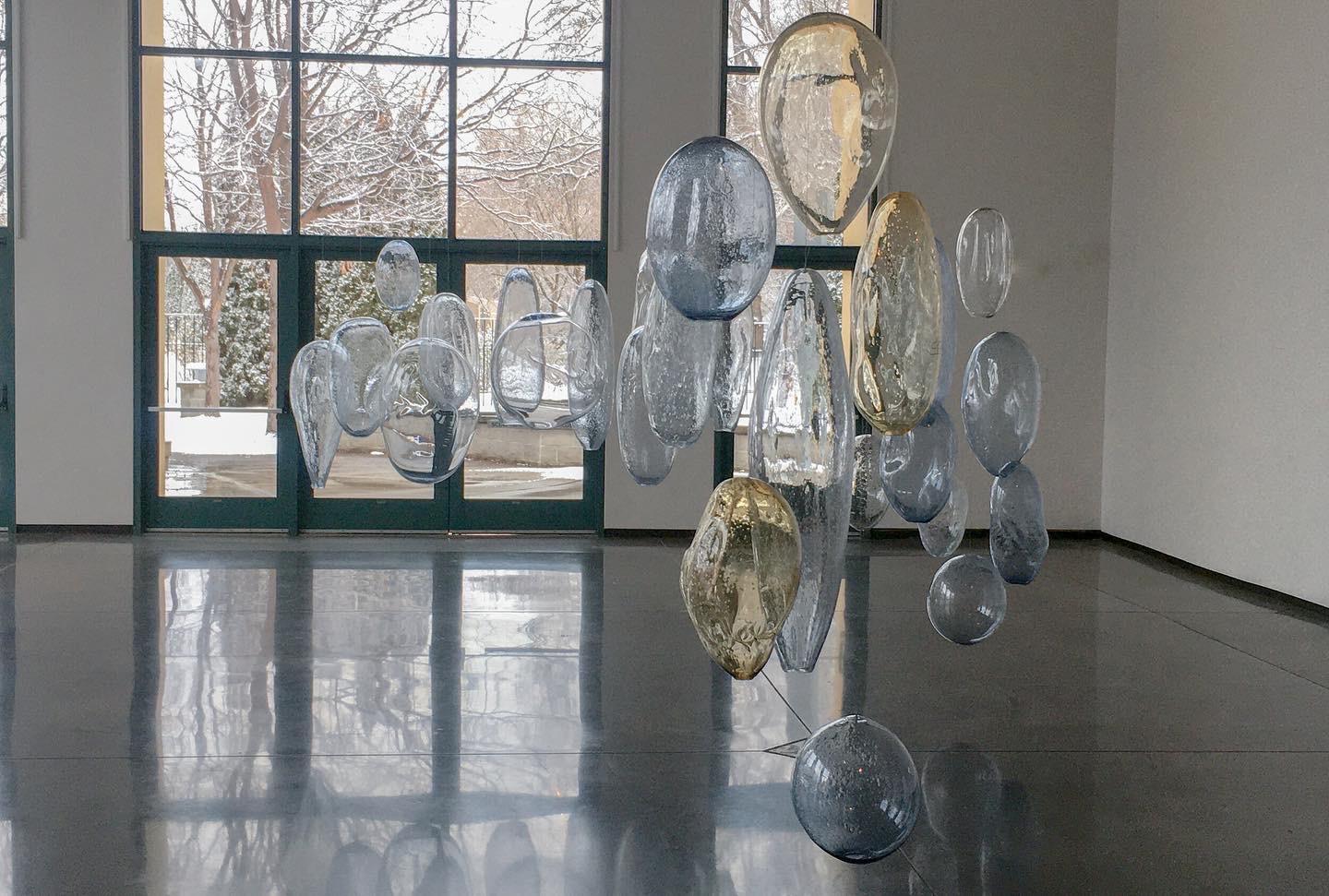 Ann Gardner installation at Boise Museum
Ann Gardner installation at Boise Museum
artist envisioned hand-blown glass orbs to be suspended from the ceiling above the airy atrium. The transparent globes were to hang from seven steel rings, representing each day of the week.

 Design and maquette of installation
Design and maquette of installation
On one end of the installation, the glass orbs would form into a fiery, reflective red and gold cluster, representing the sun. On the other end the globes would come together in frosted greys and silvers to indicate the moon. The orbs between these would hang at different levels and were to be transparent in their different hues of soft blues.

 Gardner in her studio
Gardner in her studio
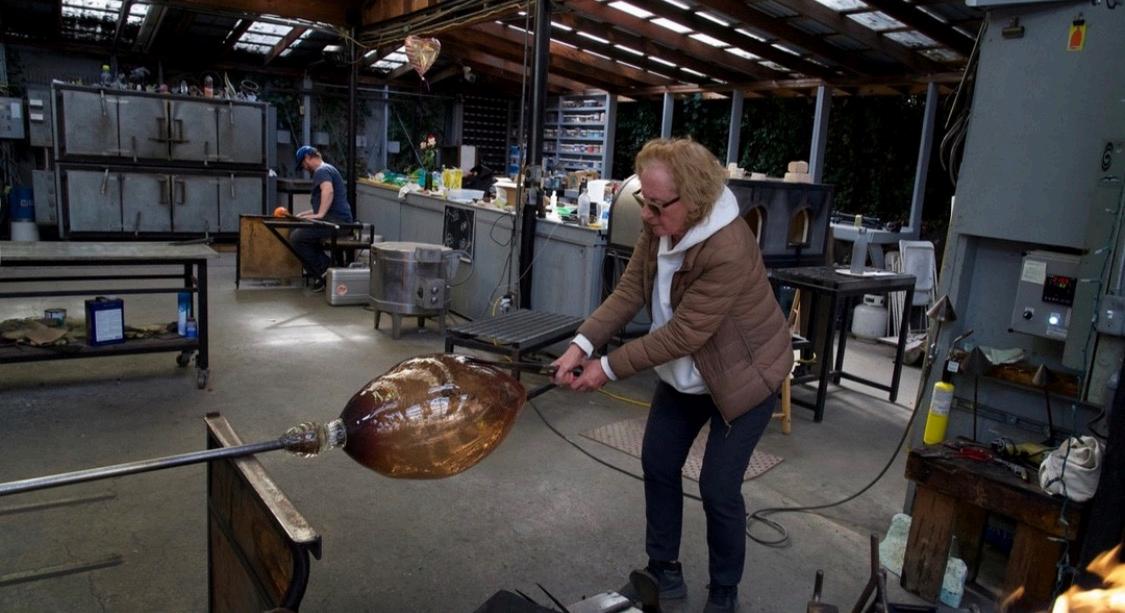
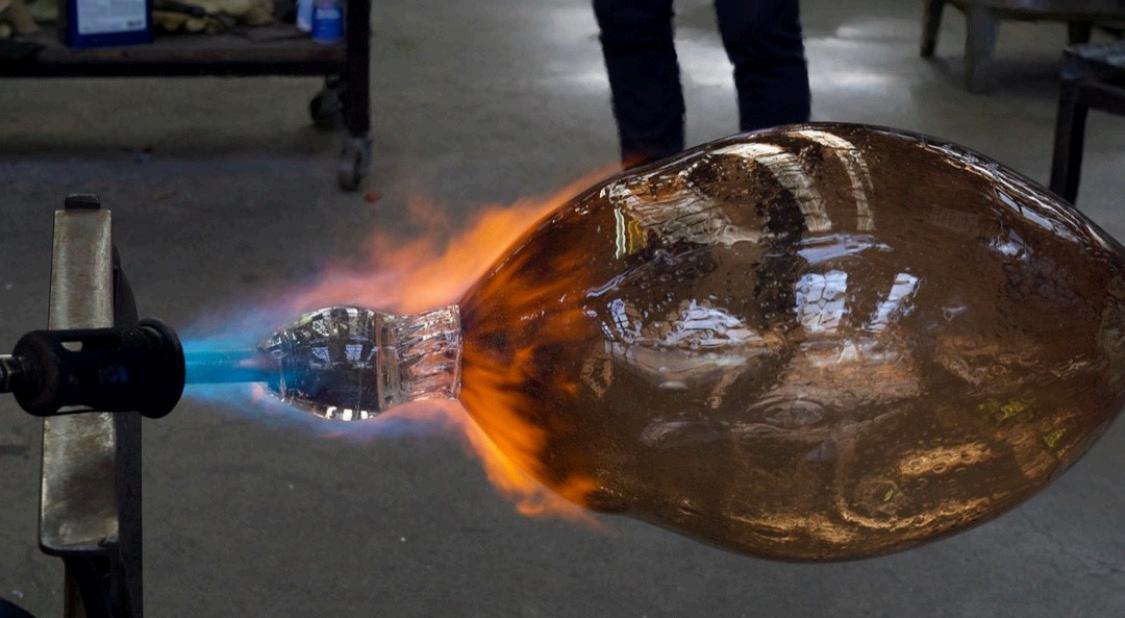
Each orb was hand-blown, knocked off the pipe, drilled to form a hole while it was still hot, placed in an annealer to cool for 24 hours and ground to remove any sharp edges.

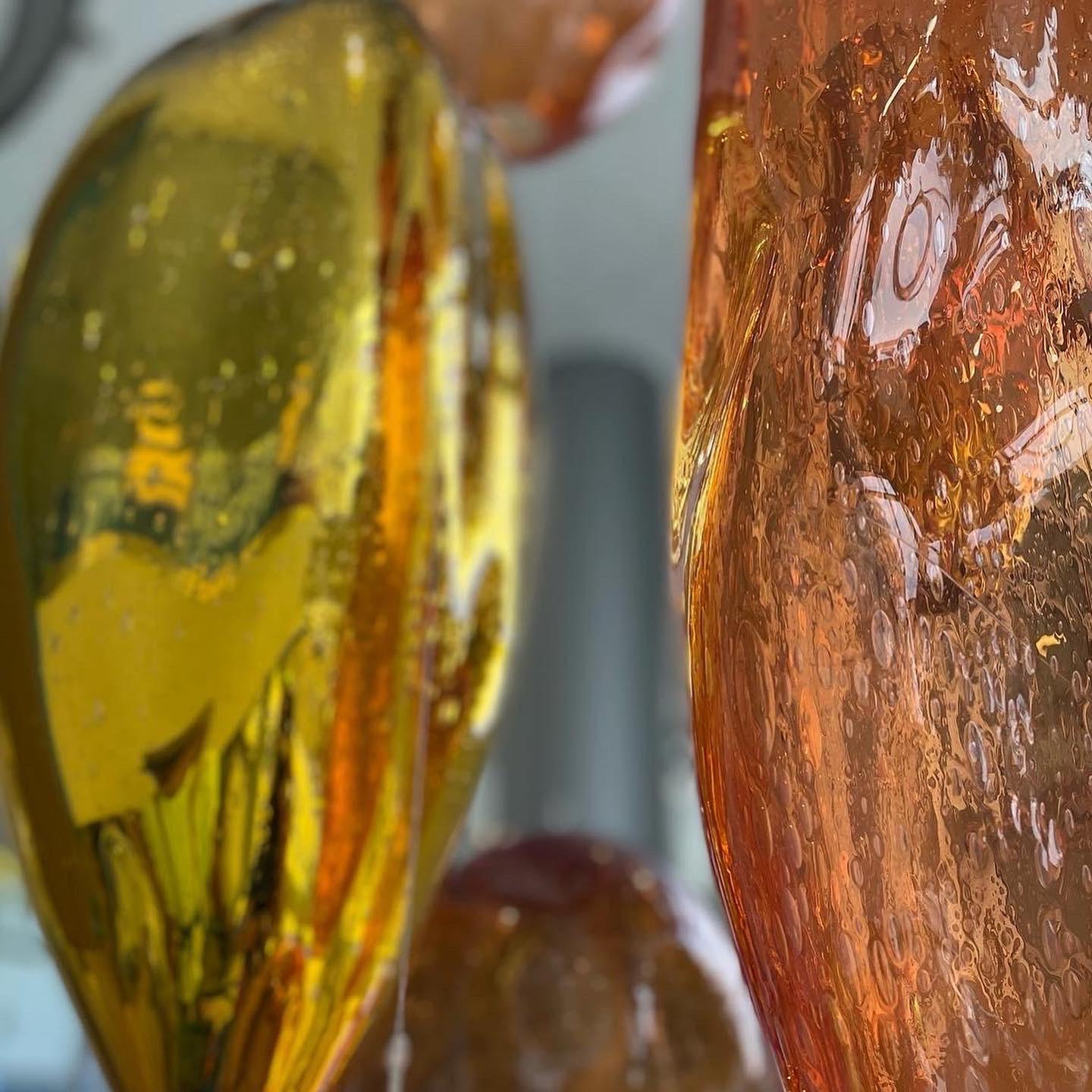


Installation process photos

